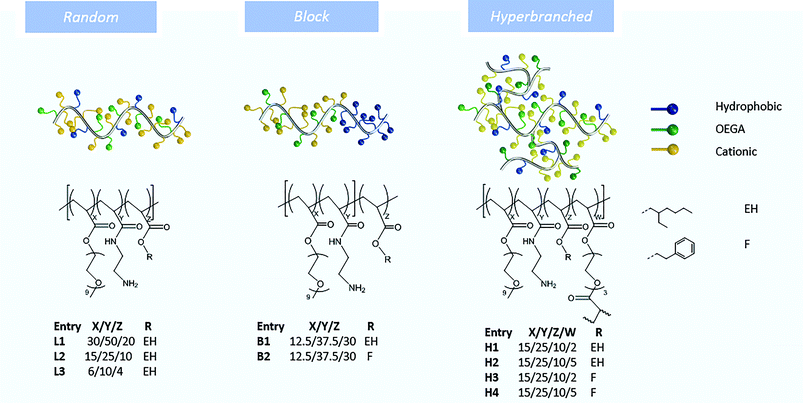 Open Access Article
Open Access ArticleCreative Commons Attribution 3.0 Unported Licence
Correction: The effects of polymer topology and chain length on the antimicrobial activity and hemocompatibility of amphiphilic ternary copolymers
Rashin
Namivandi-Zangeneh
a,
Rebecca J.
Kwan
a,
Thuy-Khanh
Nguyen
a,
Jonathan
Yeow
a,
Frances L.
Byrne
b,
Stefan H.
Oehlers
cd,
Edgar H. H.
Wong
*a and
Cyrille
Boyer
*a
aCentre for Advanced Macromolecular Design (CAMD) and Australian Centre for NanoMedicine (ACN), School of Chemical Engineering, UNSW Australia, Sydney, NSW 2052, Australia. E-mail: edgar.wong@unsw.edu.au; cboyer@unsw.edu.au
bSchool of Biotechnology and Biomolecular Sciences, UNSW Australia, Sydney, NSW 2052, Australia
cTuberculosis Research Program, Centenary Institute, Camperdown, NSW 2050, Australia
dSydney Medical School, The University of Sydney, Newtown, NSW 2006, Australia
First published on 11th September 2017
Abstract
Correction for ‘The effects of polymer topology and chain length on the antimicrobial activity and hemocompatibility of amphiphilic ternary copolymers’ by Rashin Namivandi-Zangeneh, et al., Polym. Chem., 2017, DOI: 10.1039/c7py01069a.
The authors regret the error in Fig. 1 of the original manuscript. The corrected version of Fig. 1 for this paper is as shown below.
 | ||
| Fig. 1 The compositional structures and architectures of the amphiphilic ternary copolymers in this study. | ||
The Royal Society of Chemistry apologises for these errors and any consequent inconvenience to authors and readers.
| This journal is © The Royal Society of Chemistry 2018 |
